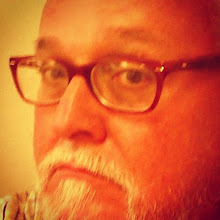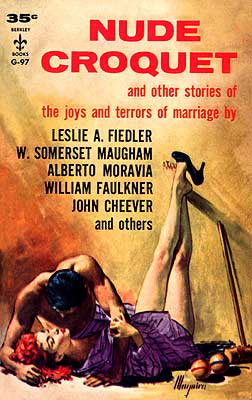
As long as we are fishing for information in 1933's Meredith and Co., the first published work by George Mills, we might as well backtrack for a moment and take a peek at his preface to the volume. Some of it will relate to upcoming adventures at fictional Leadham House School, but other aspects will be germane to my last few posts, and to a thread that's been running through all of this "Millsness." This, then, would seem to be a good time to take look.
ALTHOUGH all the incidents in this book, with the exception of the 'bait charts,' are imaginary, the book gives an accurate impression of life in a Boys' Preparatory School.
I wish to acknowledge, with much gratitude, the help and encouragement received from many friends; particularly from Mr. A. Bishop, the Head Master of Magdalen College School, Brackley, and from my old friend, Mr. H. E. Howell, who have read the book in manuscript form. I am also very much indebted to that splendid specimen of boyhood, the British Schoolboy, who has given me such wonderful material.
------------------------------------------------------------------------ G.M.
The first paragraph above would seem to confirm that the events described by Mills in the 1933 text are an amalgam created using elements of many similar situations Mills had experienced in class-rooms between 1925 and 1933. That seemed evident as he described the first day of teaching—ever—of Mr. Mead.
Mead was idealized in that situation and able to perceive things that a nervous novice simply would not have been able to. Mills has idealized the first day of teaching, at least as far as its outcome might go. He may not have learned that "registering" laziness trick until years later, for example. Still, there is palpable anxiety regarding new routines and how a room full of children may react to a strange teacher. It's especially interesting regarding the grandstand play we saw Mr. Mead pull yesterday, ordering the time-wasting boys back for a Saturday night class. As he gathers up his books and stalked out of the classroom, we're privy to the reaction of the boys and immediately know it "worked." Mead, however, waited to have its success confirmed by Peter (Dr. Howell Stone), the Head Master.
Also of some interest are the two gentlemen named as having helped and encouraged Mills as he worked on the manuscript for Meredith and Co. With only initials to work with, it is difficult to track down individuals with the unremarkable surnames Bishop and Howell, especially since almost 80 years have intervened.
 Magdalen College School and their 'Old Brackleians Society' failed to respond to an enquiry related to the identity of "Mr. A. Bishop." I'll prod them again today to see if I can turn up any information on someone who may not have been merely a sage proofreader of this text, but an older friend who may actually have helped steer the 29-year-old George Mills into taking a stab at the career in education we've been reading about the last few days.
Magdalen College School and their 'Old Brackleians Society' failed to respond to an enquiry related to the identity of "Mr. A. Bishop." I'll prod them again today to see if I can turn up any information on someone who may not have been merely a sage proofreader of this text, but an older friend who may actually have helped steer the 29-year-old George Mills into taking a stab at the career in education we've been reading about the last few days.Regarding Mr. H. E. Howell, I found a reference to such a person in the 1913 edition of The Devonian Yearbook, and a newspaper obituary regarding his attendance at a well-attended funeral. On 5 April of this year, I sent the following message to All Saints, Margaret Street:
Hello! I am an American researching a British author of children's books named George Ramsay Acland Mills. Two of his novels about preparatory schools acknowledged the help of a dear friend, Mr. H. E. Howell, and a main character was named "Howell" in both, I suspect in tribute.
 In trying to discover the identity of the actual Mr. Howell, I happened upon a Times obituary from 26 August, 1935. In it, a "Mr. H. E. Howell" represented "All Saints', Margaret Street" at the funeral that was held for Revd J. B. L. Jellicoe.
In trying to discover the identity of the actual Mr. Howell, I happened upon a Times obituary from 26 August, 1935. In it, a "Mr. H. E. Howell" represented "All Saints', Margaret Street" at the funeral that was held for Revd J. B. L. Jellicoe.While obviously not a reverend himself, did an H. E. Howell have any connection with All Saints, Margaret Street? Also, is there any way of knowing if the author, Mr. George R. A. Mills, was a member of the congregation? Mr. Mills was also a schoolmaster at Warren Hill School in Eastbourne and Eaton Gate Preparatory School in London during the 1930s.
Lastly, did Revd Barton R. V. Mills have any association with All Saints? Interestingly, the Revd Mills held the distinction of being a holy cleric in the Anglican Church while at the same time having converted to Roman Catholicism. That is what I would consider to be an unusual combination for a man who served as a vicar in Cornwall and served as an assistant chaplain in the Chapel Royal of the Savoy after his conversion. I found it particularly interesting when I read that your church is considered Anglican Catholic.
Revd Mills passed away in 1932. He was the father of George R. A. Mills, and he had daughters named Agnes Edith and Violet Eleanor.
Any small bit of information you may be able to provide may lead me to more, so may I please enlist your assistance? It would be greatly appreciated. Thank you very much for your time, patience, and consideration, and I look forward to hearing from you!
The next day I received this reply:
Dear Mr. Williams,
I will get our archivist on the trail of the people you mention. Fr. Basil Jellicoe was a famous at St. Mary's, Somers Town, next to Euston Station between the wars. He was a crusader for decent housing and started the housing association movement to provide it for the poor. He certainly had connections with All Saints.
with best wishes,
yours,
Fr. Alan Moses
Vicar
Once again, we find a connection between the ostensibly Anglican Mills family and Catholicism. Howell is described in Meredith and Co.'s preface as being an "old friend," so there is the implication that Mills was connected with Howell before the death of his father, Rev. Barton Mills. Knowing that Howell was so well-connected with All Saints Church that he represented that entire institution
 at the funeral of a well-known and heroic public figure, Fr. Basil Jellicoe [pictured, from left: Charles Eddington, Prince George, and Jellicoe], it's hard for me to believe that it was simply coincidental that Mills became a trusted friend of such an important church figure with no regard whatsoever given to either's faith.
at the funeral of a well-known and heroic public figure, Fr. Basil Jellicoe [pictured, from left: Charles Eddington, Prince George, and Jellicoe], it's hard for me to believe that it was simply coincidental that Mills became a trusted friend of such an important church figure with no regard whatsoever given to either's faith.And one wonders if uncertainty of faith isn't at least part of the reason that so many of the surviving relations of Mills and his nuclear family have been so distanced from Mills, et al, for so long that they no longer remember much about Barton, Edith, Arthur, George, Agnes, and Violet—despite the relative fame of some of them as authors—if they, indeed, even know them to have existed at all. They even seem to have been somewhat distanced from each other: Half-brother Arthur F. H. Mills, a published author himself, neither helped nor encouraged George with his 1933 manuscript.
And that's the odd part of all of this: Relatives of the nuclear Mills family of my interest here seem to have little interest in that same extinct little clan of their own relations headed by Barton R. V. Mills—again, that's if they even know who those people are. That's not necessarily a knock on the descendants I've found; it's just a fact. One does wonder why that's the case, though.
So I'll continue, at least for a while longer, poking at institutions that may have some bit of information about members of a family that have been cut adrift in time, culturally and genealogically.
I know I'd want someone—anyone—to posthumously look for and remember me if I were to end up in the same situation: Essentially forgotten. I guess that's why it will be so difficult on the day—and I believe it may be coming soon—that I finally decide to abandon the Mills family myself. Meanwhile, I'll still be trying to find what "A." And "H. E." stand for in the names above...


![Meredith and Co. [1933] by George Mills](https://blogger.googleusercontent.com/img/b/R29vZ2xl/AVvXsEjlUeRNPnH8Xd8JT59QdtabQHRI6DI6Hqew57i6qixjOL3LjgUD9g22o3-wNlmBya36D5-6KZXX-sxLnktAfEqjlvTmdwyiIL2K6VHOGW2Wq9Pe8_oFGknENfVE1Xrkdj0b8FYXTz_6SMg/s1600-r/sm_meredith_1933.JPG)
![King Willow [1938] by George Mills](https://blogger.googleusercontent.com/img/b/R29vZ2xl/AVvXsEgiz_iaQjinIbVw6yQ-W4hwx6wGJwMQH9azCs3Qacp9eX627B7Eq9hMn1wlHLzlkbcflHRWM8VcPX-1uteKbs4LA5q5Oq69WhrnhzBQLjpseK_M34PSoOOhTZ96EfVAGFehG53gZ0M4EvU/s1600-r/sm_1938.JPG)
![Minor and Major [1939] by George Mills](https://blogger.googleusercontent.com/img/b/R29vZ2xl/AVvXsEgH5nj4Q6BNpzVEb1vyJeGV6ikuN4SFAyDa-jypIgbvdrxqcjHkNxqjrXH7ptZmge7oTTpn5QjAI0yCJPdI-fIzooCDD1TAA3RDxO9jzLcU3QOIhBWKiKNz6CPjCSTZgIPd9_4zM7LLpAw/s1600-r/sm_1939.JPG)
![Meredith and Co. [1950] by George Mills](https://blogger.googleusercontent.com/img/b/R29vZ2xl/AVvXsEgm_JPAXPpX0wb8bDkjYG67Sg1HePiPhRP6b9oUMWvkJhiW6XJzmxTQ7TBepfxpPgRrFNCRuumYRj-SAfU9Kw-uDsbO5HBtyxfQfClHVMJxJUkDpbkrCPhzpC4H_g_ctlirgnSla4vX1EQ/s1600-r/sm_1950.JPG)
![Meredith and Co. [1957?] by George Mills](https://blogger.googleusercontent.com/img/b/R29vZ2xl/AVvXsEg0zRm3-CCmA8r2RrBmrACDvmxJjoBjfxUoPI9yc6NWu1BZ3dd89ZvCixmmKZe1ma0QiDIrsDZNqf-8h1egh0JLiRYHagXAqQ1UknWPy6SksK76psYPcEMLGa_Aj7wo2vMFPo0aMdcx_pg/s1600-r/sm_meredith.JPG)













No comments:
Post a Comment